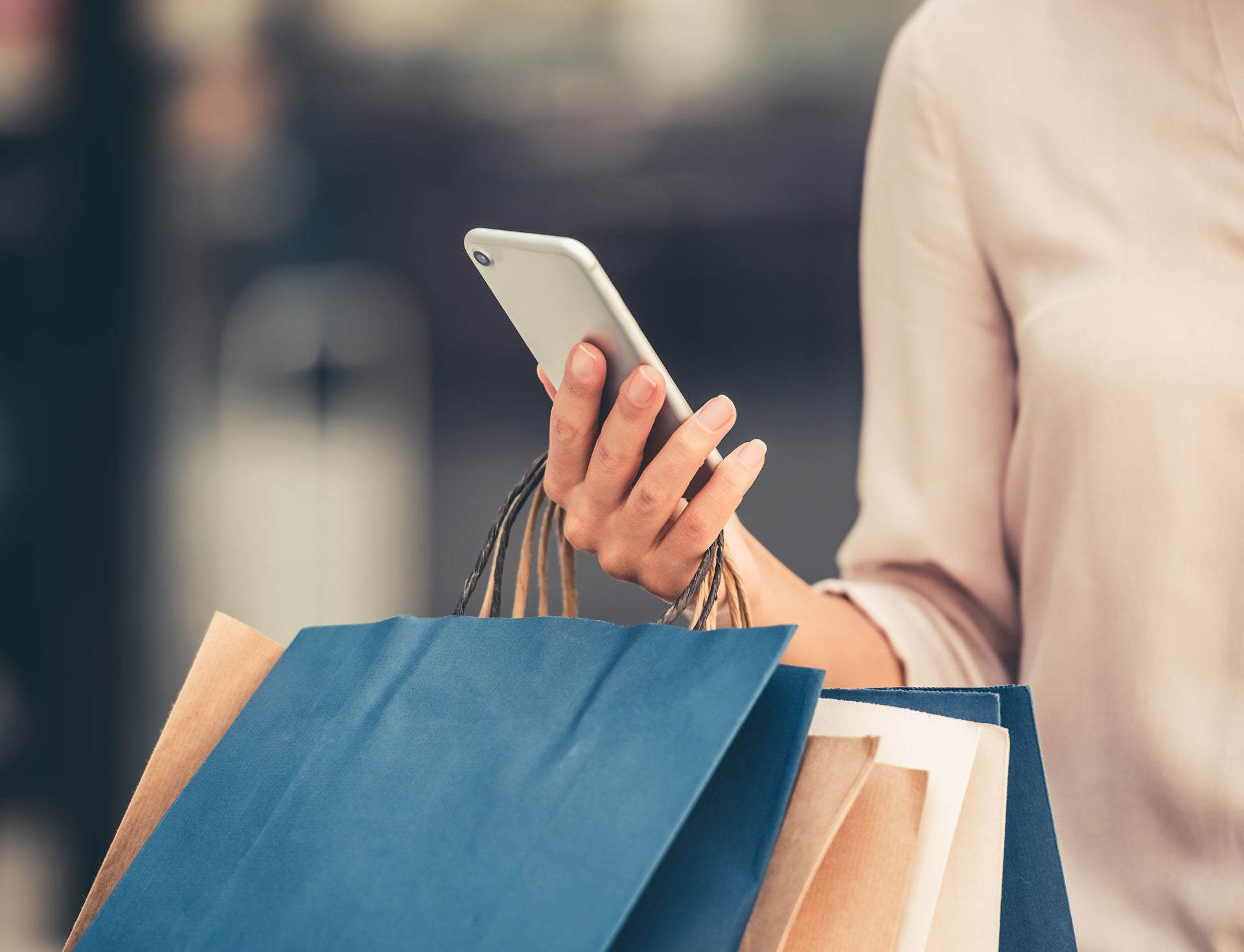
The current retail climate is dominated with headlines warning that the death of the high street could be imminent, and with 106,000 retail jobs lost between March 2016 and 2019, it is easy to see why.
With brands such as Karen Millen, Patisserie Valerie and Debenhams once staples of many UK high streets closing branches, companies are having to re-think how the physical store operates.
Many have called for a greater investment in retail technology in order to save the ailing high street, but with many brands “shackled by legacy systems” how can businesses deploy technology in such a way to entice back much-needed consumers?
Rob Shaw, SVP Sales and Managing Director EMEA at software company Fluent Commerce spoke to Verdict about how businesses can adapt to the new retail environment.
The growth of retail technology
Fluent Commerce offers a cloud-based platform that lets retailers and brands provide an omnichannel experience. With real-world experience of deploying retail technology, Shaw explains that being based in Australia has required the company to come up with creative solutions that come with delivering goods to a vast geographical area:
“Being headquartered in in Australia, we were born from working with some very complex environments, where distribution, delivery and that whole availability and promise to deliver goods is absolutely paramount because of the geographical space of Australia and New Zealand and wider South East Asia. And that’s been our heritage.”
How well do you really know your competitors?
Access the most comprehensive Company Profiles on the market, powered by GlobalData. Save hours of research. Gain competitive edge.
 Company Profile – free sample
Company Profile – free sampleThank you!
Your download email will arrive shortly
Not ready to buy yet? Download a free sample
We are confident about the unique quality of our Company Profiles. However, we want you to make the most beneficial decision for your business, so we offer a free sample that you can download by submitting the below form
By GlobalData
According to the Guardian, in the first half of the year 16 physical stores closed their doors every day, with just nine opening. As a result, the shop workers union Usdaw has called for a review of business rates to make it easier for physical stores to compete with their online counterparts.
However, Shaw believes that this signifies that the retail environment is currently undergoing a period of transformation:
“I think retail has always been in a position where it’s naturally evolving from when it first started off as single stores, and then we started to have specialist stores that came up offering unique propositions and then the automobile came along and people started to travel more to shop and trade, then the internet came then mobile came. I think what we’re seeing is actually just a natural evolution of how retail is changing. And it’s changing because of consumer lifestyle.
“Yes, there are factors that are being affected for businesses, when you think about how Brexit has affected things. The uncertainty of certain strategies and direction…And then we counter that with a consumer who has a limited amount of free time to go and shop. We’ve all got accustomed to this immediate delivery, immediate promise of fulfillment of goods and I think Amazon has been a key leader in that space…Because we have a limited amount of social time.”
“Businesses are evolving”
In this hostile retail environment, many are having to rethink their marketing, customer engagement, and stock management strategies. According to Gartner, global retail tech is due to increase by 3.6% to $203.6bn in 2019, with augmented reality, facial recognition artificial intelligence and big data trends to watch in this space, according to ZDNet.
As well as an adoption of specific new retail technologies, Shaw believes that there has also been a shift in mindset, with brands waking up to the fact that consumer needs and wants are changing:
“I think businesses are evolving. They’re realising that actually, we don’t just want to shop on a Saturday, we want to be entertained and we want to socialise. So you see a lot of shopping districts that combine those kind of experiences together… it’s another way of bringing consumers in.
“We don’t have the time that we used to have to go and shop and we want things instantly. So the retailers and the brands that actually give consumers back their time and make your shopping experience more convenient, are the ones that are going to succeed.”
Battling with ever-increasing levels of choice and convenience offered by online retailers, brick-and-mortar stores are now having to offer something new to entice customers. Shaw believes this has allowed younger, more innovative brands to emerge:
“If you have a newer, younger retailer or brand, they have less legacy to deal with, and less complexity to fiddle with so they can move faster. if you’re a traditional retailer, you’re probably got an environment that’s got a lot of legacy systems, processes, technology that you need to adapt to weed your way through.”
“It’s not just about physical products”
Shaw believes that brands that have invested in offering omnichannel experiences are set to reap the rewards. Omnichannel retail refers to the merging of different ways of interacting with a brand, across various devices or ways of shopping. He names JD Sport as a brand that has had success in this area:
“JD Sports seems to be bucking the trend with regards to its revenues and its results that were recently published. And they’ve done that because of their multi-channel strategy and and making goods available across any channel. And again, making it easier for their customers to interact with them.”
However, for other brands, focusing on creating a unique customer experience is what sets them apart from online retailers, with some brands now using their flagship stores to showcase new retail technology offerings.
Earlier this year, John Lewis launched a new app allowing shoppers to virtually “try on” lipstick before making a purchase. Shaw believes that for certain demographics, this can successfully drive sales:
“It’s not just about physical products that you buy, it’s how you can actually entice the consumer into that environment so they can feel that they’re part of the shopping journey, whether that’s having a makeover before you’re buying beauty products, or whether it’s the fact that you can go to a store, and you can socialise with your friends before you go shopping. You have to really think about what the key driver is for the demographic that you’re focusing on.”
Physical stores are here to stay
Looking to the future, Shaw believes that if commercial real estate prices continue to rise, businesses will have to re-think the physical layout of stores, meaning retailers will have to rely on retail technology, rather than physical items, to best showcase products:
“Where I think it could catch on, is when real estate becomes so expensive, that just the standard footprint of a store doesn’t become efficient and economical, then I think retailers will use [AR and VR] technology.
“I think a lot of installed technologies are designed nowadays, to offer an entire catalogue at the lowest possible in such a way that you don’t lose that consumer experience… I think, in the next three, four or five years, we’ll start to see a lot more augmented reality and machine learning technology, simply because I think we’ll see smaller footprint stores.
“I think we’ll see a lot of pop up stores, and we’ll see a lot of online players as their consumers want to go and see their brand when they’re walking down the high street. So it’s a way that they can cost effectively get their brand in front of the consumer in as many channels as possible.”
And will high streets ever become a thing of the past? According to a study by KIS, 61% of UK consumers are worried that high street shops could disappear completely. However, for Shaw, these fears are unlikely to become a reality:
“No chance are [physical stores] going to go away. Everything that I see, that I hear is still saying that a physical store is driving the majority of revenue for businesses. People still want to go and physically touch goods.
“They still want to have that experience. I don’t think that retail is in crisis, retail is just evolving. And we have got an over-capacity of stores. So the high street is not going to die, the highstreet is going to evolve.”
However, he advises brands to think carefully about their strategy for investing in cutting-edge retail technology:
“Quantify the return on investment, and make sure that it’s actually going to add value to your bottom line as quickly as possible. It’s natural human tendency to be blinded by things that are nice and shiny and brand new, such as some of the newer technologies, but unless you can prove a business case for it, I would say you need to quantify it, and think long and hard.”
Read More: 2019 could be the year that retailers embrace the benefits of AI.






